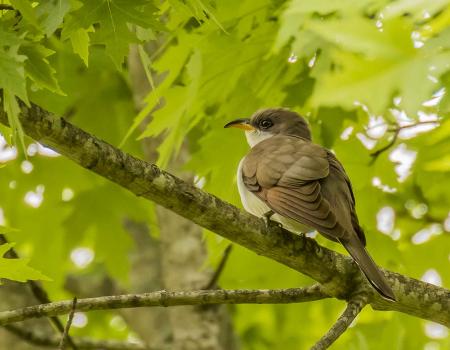
USDA Funding to Pay for Planting of Trees and Prairie
LA CROSSE, WI – The Natural Resources Conservation Service (NRCS) and Farm Service Agency (FSA) have approved funding from the Conservation Reserve Program (CRP) for two land restoration projects at Plum Creek Conservation Area (PCCA) near Wauzeka, in Crawford County, Wisconsin.
PCCA is owned and managed by local land trust Mississippi Valley Conservancy (Conservancy). The first restoration project consists of 11,200 trees that were planted across an 18.5-acre ridgetop field in May. The tree species planted include a mix of red oak, white oak, bur oak, swamp white oak, hackberry, and black cherry – all native species in the Driftless Area. Further work to control invasive plants in the vicinity will help the seedlings thrive. Together, the trees will gradually reestablish the forest canopy for nesting migratory birds and other wildlife.
The second project, planned for this fall, consists of converting 172 acres of row crop into diverse prairie plants at PCCA. The prairie planting is designed to improve soil health, prevent topsoil erosion, protect water quality, increase the native species diversity and provide habitat for pollinators and other prairie species.
The CRP program will cost-share half of establishment costs for the tree and prairie plantings. An additional annual payment can fund ongoing maintenance of the land over a fifteen-year period for the tree contract and a ten-year period for the prairie contract, after which they can be renewed. Income from the property also helps the Conservancy to pay the property taxes.
PCCA was acquired by the Conservancy in 2022, with support from an anonymous donor and The Nature Conservancy in Wisconsin. The Nature Conservancy, the Wisconsin Department of Natural Resources and the Savanna Institute are working with the Conservancy on the ongoing management plans for the property.
“While we’re still developing long-range plans and seeking funding for further habitat restoration,” said Michael Reitz, restoration ecologist with the Conservancy, “the CRP allows us to get started on work that will deliver benefits very soon. The deep root structure of the prairie plants we put in will hold soil and slow the runoff of rainwater, while feeding pollinators and birds. The newly planted trees will take longer to mature, but they will immediately begin functioning as a nature-based solution to climate change by capturing and sequestering carbon dioxide from the atmosphere.”
Parts of the land are still leased and farmed, and future efforts will incorporate habitat restoration in conjunction with agricultural operations.
“We are excited and look forward to a time when the ridgetops are once again home to a host of native species, including, but not limited to, butterflies, native bees, larks and flycatchers,” said Carol Abrahamzon, executive director at the Conservancy.
Above: Volunteers planting a variety of native hardwood tree species in a former cornfirle at Plum Creek Conservation Area.
